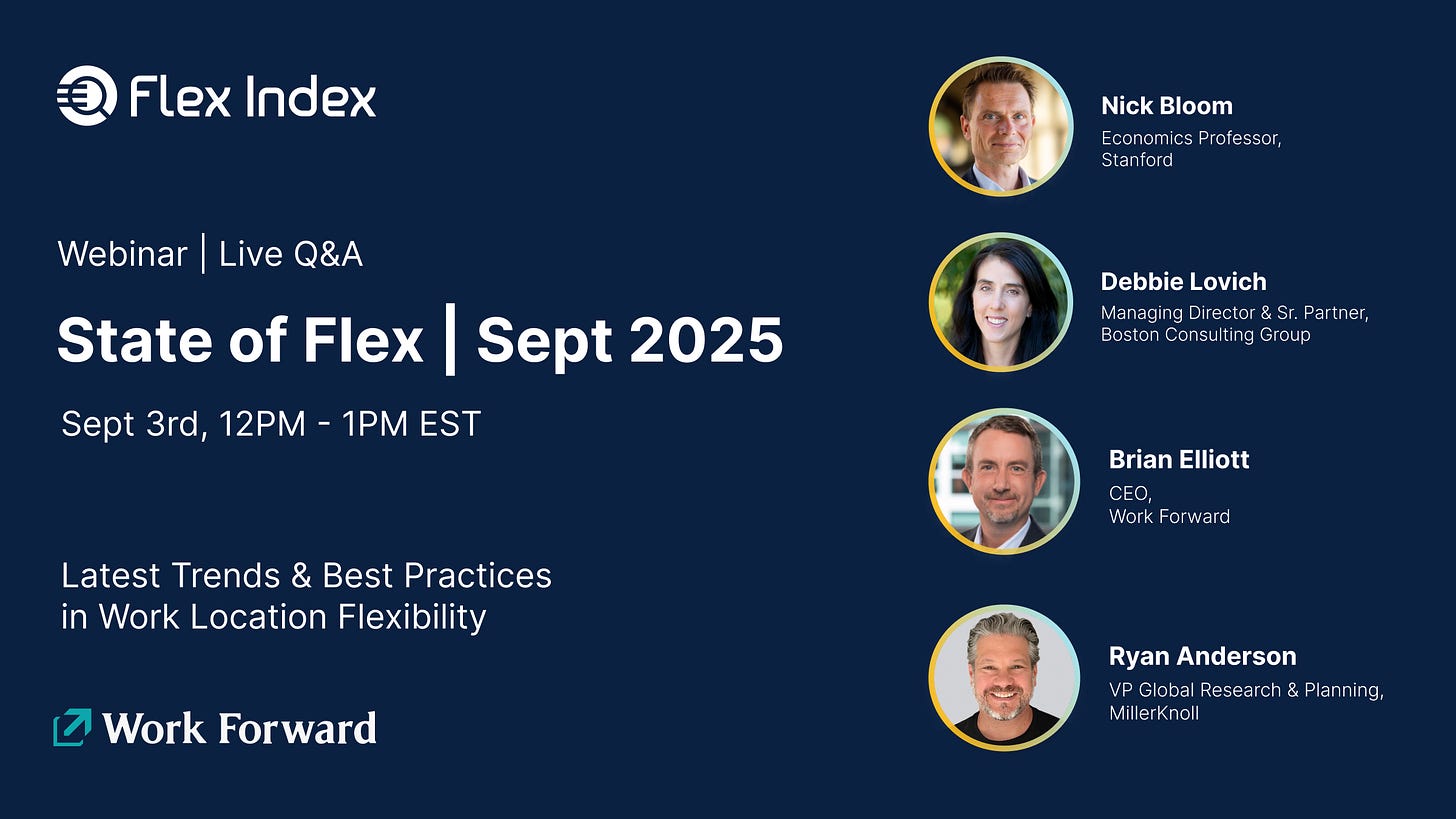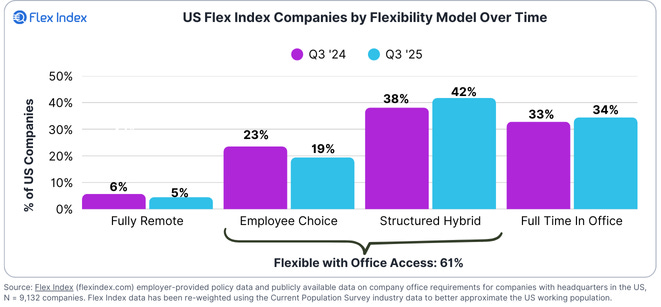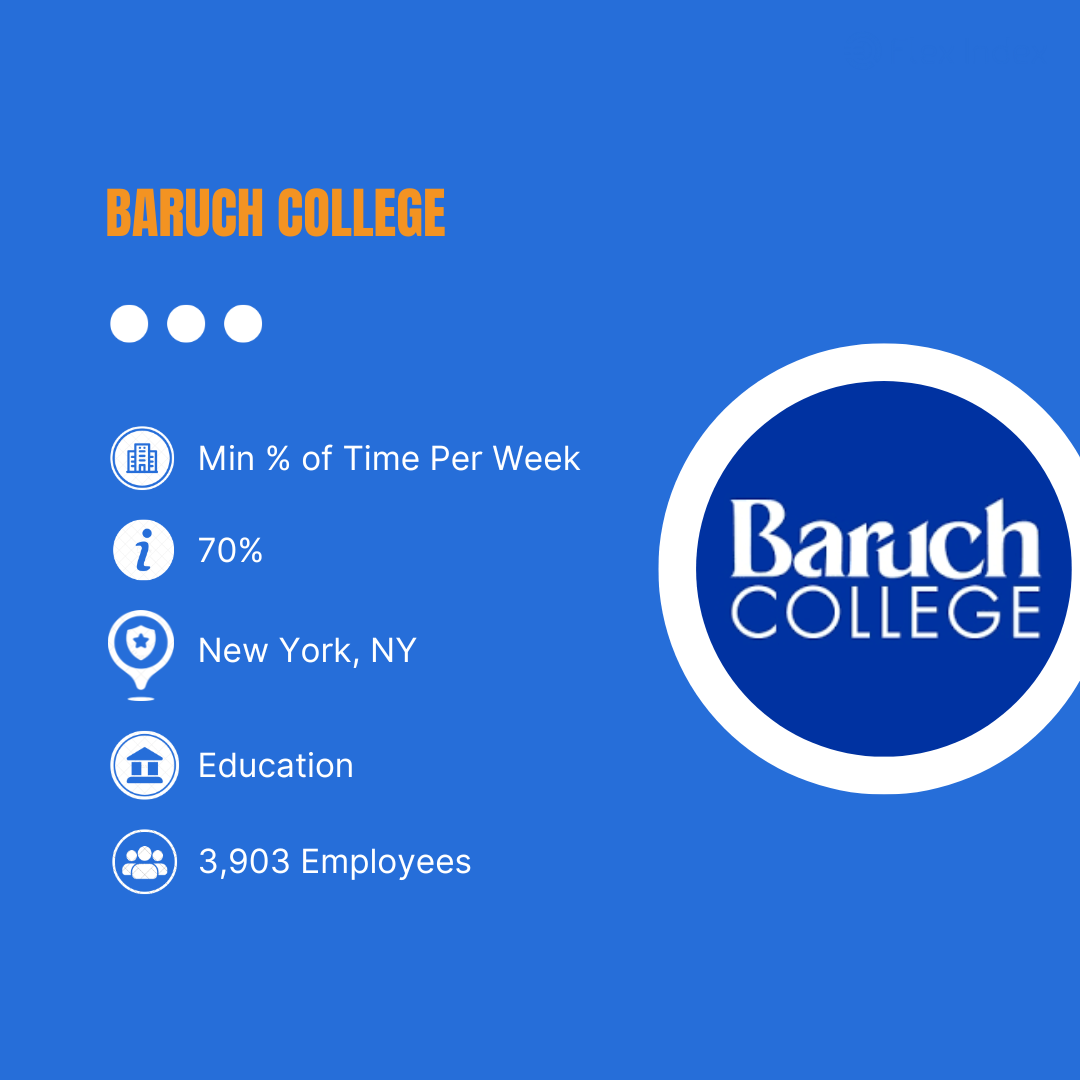Remote Work: Fewer Hours, Same Results
Plus, save your spot for tomorrow's live State of Flex webinar!
👋 Happy Tuesday! Required office time climbed 12% since early 2024, yet actual attendance rose just 1-3% — a striking disconnect between policy and reality. Join us tomorrow (Wednesday, September 3rd at 9 am PT/noon ET) for our State of Flex webinar as we dig into the latest findings from our Q3 Flex Report and answer your questions live!
In this week’s edition:
⏰ Remote Hours Drop, Productivity Steady
🎥 State of Flex Webinar Tomorrow
📊 Flexibility + Office = The New Norm
🏢 The Two-Speed Workplace
Current Subscribers: 10,160
Please forward to colleagues and friends!
THIS WEEK’S FLEX FOCUS 🔍
Why Working Fewer Hours Doesn't Mean Lower Productivity
New Gallup research reveals a counterintuitive truth: remote workers are clocking about an hour less per day than they did in 2019. Yet, productivity has remained steady—and in some cases, improved. Remote employees are redirecting 30-60 minutes of former work time to leisure activities, with some groups working over two hours less daily.
The productivity puzzle has a surprising solution. Rather than individual workers becoming more efficient, companies that hired the best-fit talent regardless of location are seeing gains through improved job-role alignment. When organizations broke free from geographic constraints, they could match people to roles that better suited their strengths.
The catch? Management quality matters more than location for both satisfaction and performance. Remote work can feel valuable when leadership falls short, but it doesn't fix underlying cultural issues. Smart companies are focusing on building a strong workplace culture first, then using flexibility as a tool to expand their talent pool and create better role matches.
UPCOMING FLEX EVENTS 🎥
Save the Date: Q3 State of Flex Tomorrow!
Join us tomorrow, September 3rd at 9 am PT/noon ET for a live discussion featuring Flex Index publisher Brian Elliott, along with Stanford Professor Nick Bloom, BCG's Debbie Lovich, and MillerKnoll's Ryan Anderson.
We'll dive into the latest workplace flexibility trends, explore fresh insights from the Q3 Flex Index report, and tackle the big post-Labor Day question: how crowded will commutes be, and how long will that last? Plus, hear new research on employee engagement, productivity, and what's really driving successful office returns.
Bring your questions for live Q&A—the chat will be open and we want to hear from you!
FLEX WORK QUICK HITS 💥
Stay ahead of the curve with our curated roundup of the trending flexible work stories making waves right now. Here's what you need to know 👇
The Hill: Companies using RTO mandates to reduce headcount are inadvertently pushing out top talent, with senior employees and high performers leaving at 18-19% rates while underperformers stay.
Business Insider: JPMorgan unveils its new 60-story Manhattan headquarters with premium amenities including a gym, Irish pub, food hall, and AI systems as part of its aggressive return-to-office strategy.
USA Today: Despite RTO mandates increasing 12% over the past year, actual office attendance rose just 1-3%, with 44% of workers "coffee badging" while companies ramp up surveillance.
UC Today: Tech companies adopting metrics-driven RTO policies focused on desk time rather than outcomes risk driving away top talent while keeping underperformers.
STAT OF THE WEEK 📈
Office + Flexibility: The Preferred Model
The vast majority of firms provide both access to offices and some form of flexibility. When we look at Employee Choice, which provides employees and teams with access to offices but not org-wide policies, together with Structured Hybrid, we see that 61% of firms have both flexible policies and provide access to office space, flat with last year. From a Workplace perspective, flexibility appears to be the future.
FLEXPERT INSIGHTS 🧠
The Workplace Divide that's Reshaping American Business
In his latest article for TIME magazine and Charter, Brian Elliott highlights a stark divide: while 29% of Fortune 100 companies now require full-time office presence, 67% of companies under 500 employees remain fully flexible.
They’re also all of the growth: smaller firms accounted for nearly all net employment growth in the first half of 2025. While Fortune 100 companies tighten policies and shed workers, smaller competitors are expanding their talent pools by offering what larger firms won’t: autonomy.
That autonomy may be paying off: research conducted with BCG (shared in our Q3 Flex Report) reveals flexible firms are expanding 1.7x faster in revenue growth than those with mandates.
Brian argues that the same traits that enabled many companies to be successful with flexibility will help with AI adoption:
This divide will likely widen as companies grapple with AI integration and other technological shifts. The same leadership qualities that enable effective flexible work—trust in employees, focus on outcomes, willingness to experiment—are essential for navigating rapid technological change.
Companies doubling down on attendance monitoring while simultaneously urging AI adoption face a fundamental contradiction. You can’t demand innovation from people you don’t trust.
COMPANY SPOTLIGHT ✨
Baruch College is a comprehensive public research institution providing undergraduate and graduate educational programs across fields like business, arts, sciences, and public affairs. Baruch College's mission is focused on promoting social mobility, intellectual engagement, and collaborative relationships, fostering an active community of students committed to academic and professional excellence.







